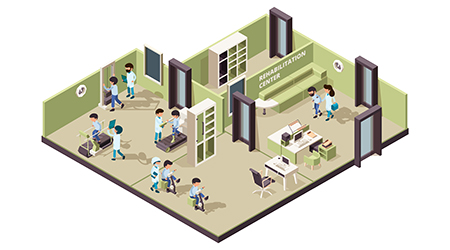The COVID-19 pandemic has changed existing facilities in innumerable ways, from physical upgrades of restrooms and workspaces to revisions of the operation of HVAC systems. Evidence is emerging, however, that the pandemic is having an even greater impact on healthcare fasciitis of the future.
COVID-19 has accelerated the need to consider the next generation of healthcare and, particularly, the way medical facilities are built and designed to better serve patients in normal times and times of crisis, according to Medical Construction & Design. Some examples:
HVAC systems. The COVID-19 virus primarily spreads person to person through respiratory droplets from coughing, sneezing or talking. It is not safe to recirculate air and, as a result, there is growing interest from medical facilities to have the ability to filter 100 percent outside air.
Flexible spaces. There is an immense and growing focus on flexibility within facilities. Scalability in patient room designs is important for resiliency planning and meeting specific needs during challenging times.
Separate spaces. COVID-19 has shown the increased need to separate patients, staff and guests to ensure the health and safety of everyone within a facility.

 Building Disaster Resilience Through Collaboration
Building Disaster Resilience Through Collaboration Amae Health Expands to New York City
Amae Health Expands to New York City Hospital for Special Surgery Opens Two New Facilities in New Jersey
Hospital for Special Surgery Opens Two New Facilities in New Jersey Should We Be Testing Toilet Water in Patient Restrooms?
Should We Be Testing Toilet Water in Patient Restrooms? Healthcare Union Petitions for Increased Staff Safety at HCA Florida Hospitals
Healthcare Union Petitions for Increased Staff Safety at HCA Florida Hospitals